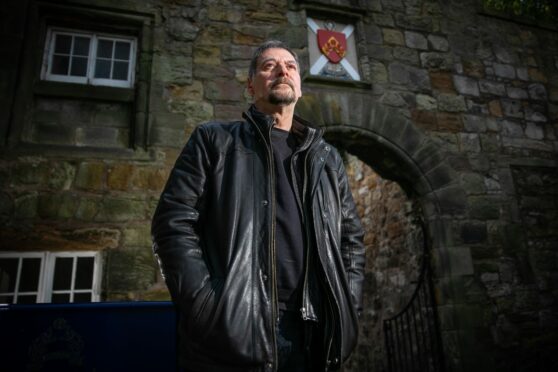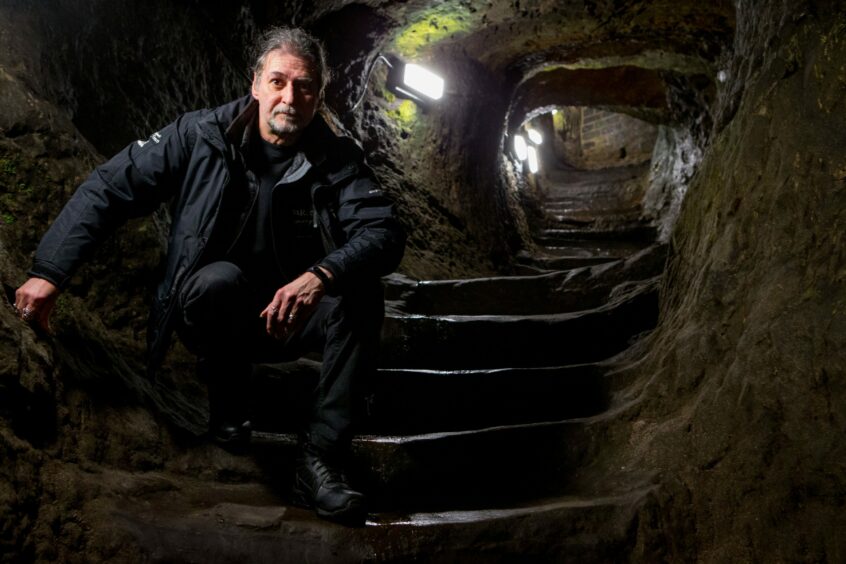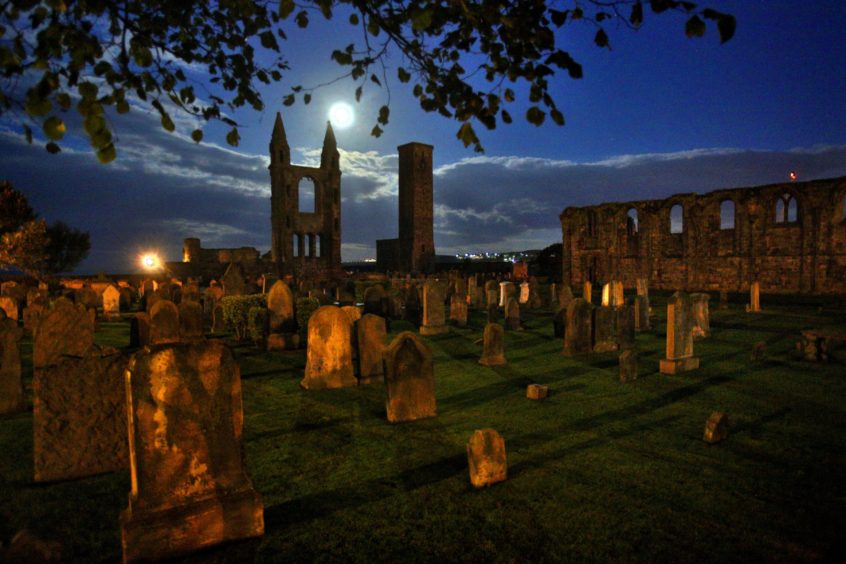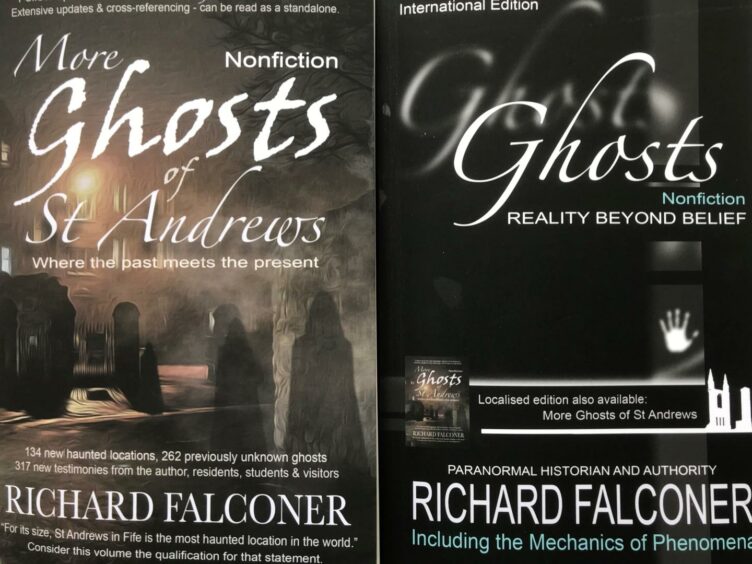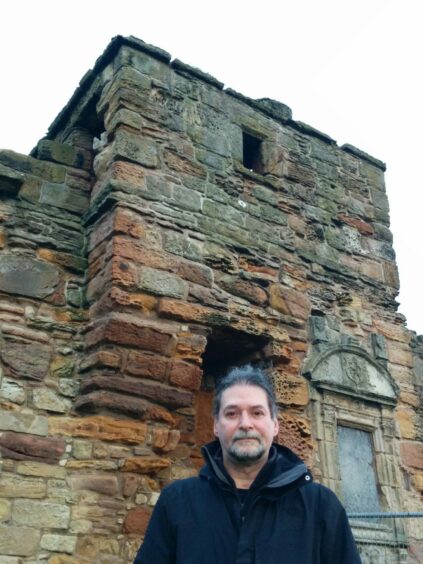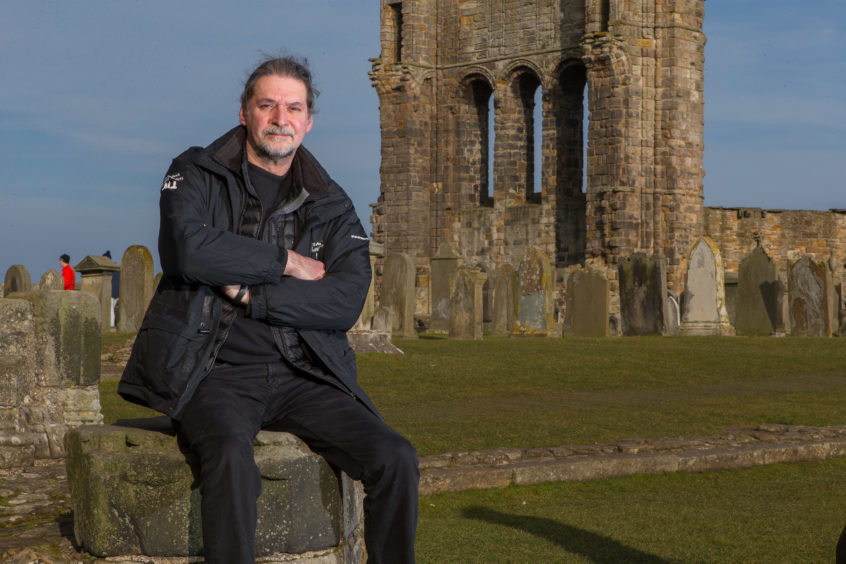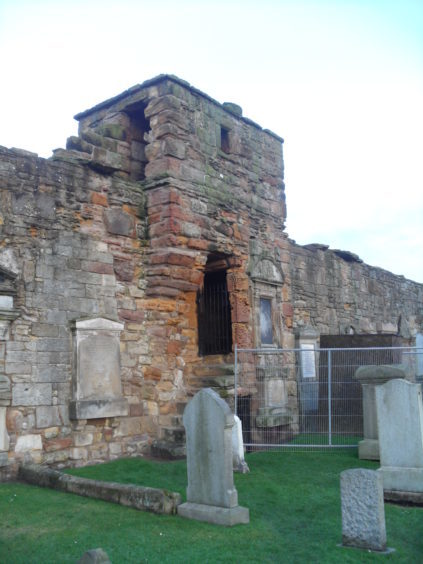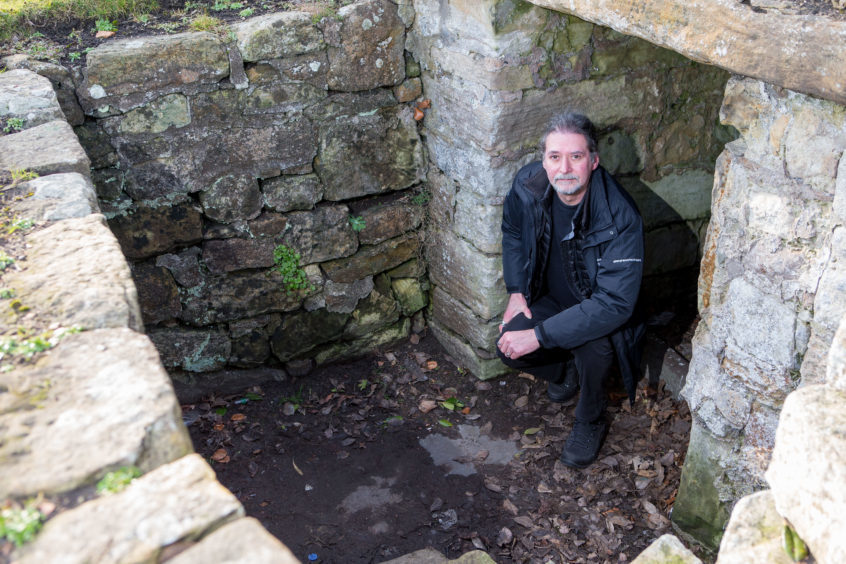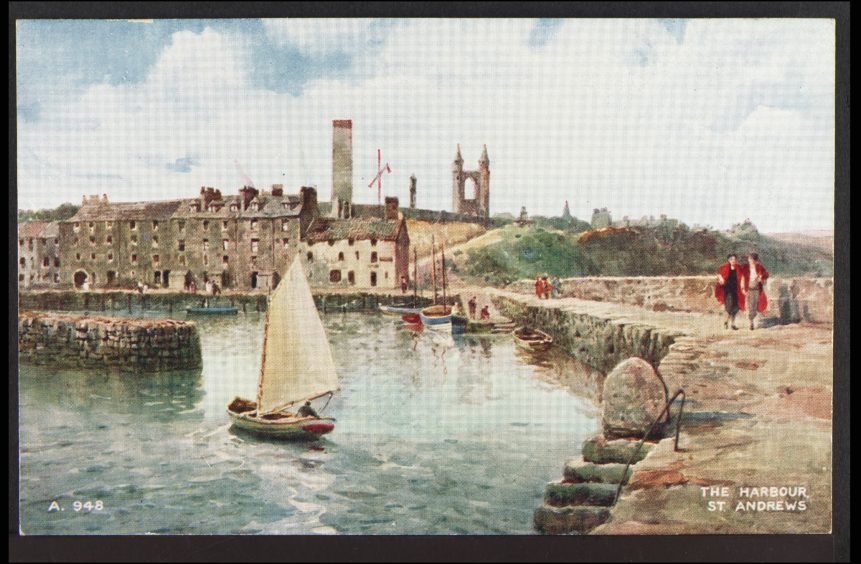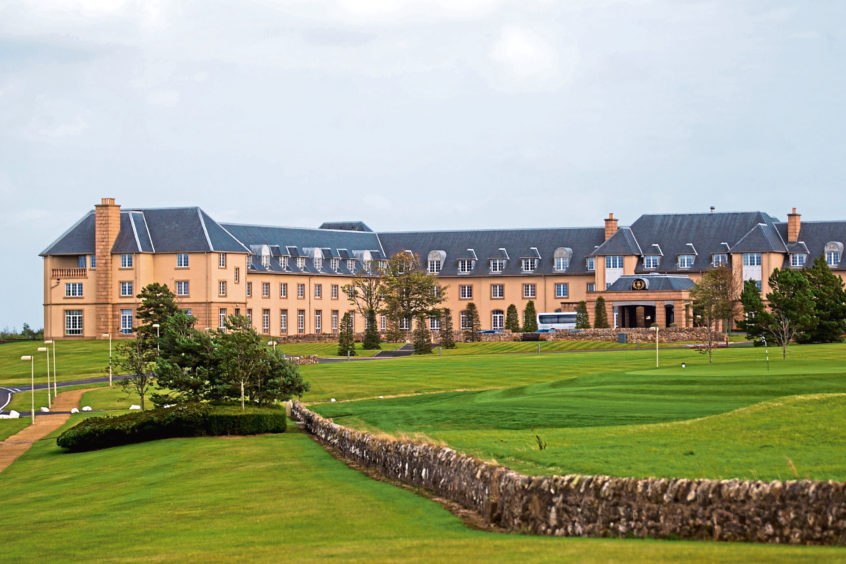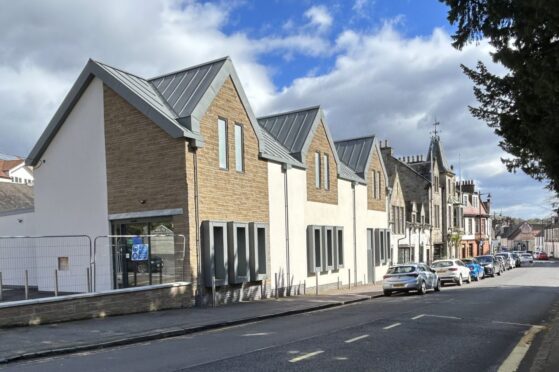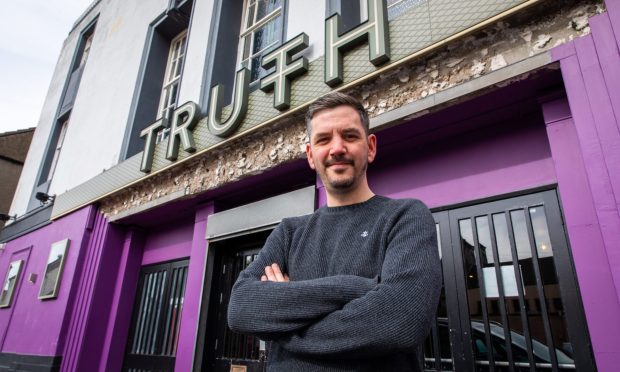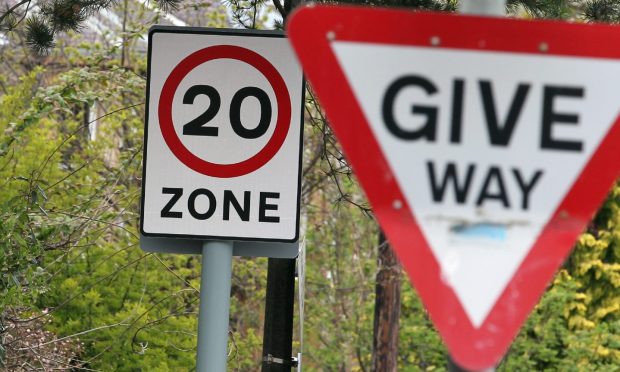With Halloween upon us, Michael Alexander speaks to author and historian Richard Falconer who has published three new books exploring the phenomena of ghosts in St Andrews and beyond.
When St Andrews author and ghost tour operator Richard Falconer is regularly asked if he believes in ghosts, his standard answer “of course not” brings a smile to those thinking he has just qualified their prejudice and a smile to his face when he observes their reaction.
But after more than 40 years working as a paranormal historian and metaphysical esotericist, the reason Richard replies in this way is because the word “belief” rarely describes peoples’ own experiences.
The reality is, he says, that the paranormal in the West is one of those rare subjects where everyone becomes an “instant expert” through opinion or fictionalisation of a subject they know absolutely nothing about.
For the reality of the paranormal to be known, the main problem is explaining its mechanics in a way that meets with comprehension.
For this to happen there must be an association, and for that to happen there must be familiarity.
“My advice to people is take everything you know about the paranormal, turn it on its head and you will find the opposite is true,” he says.
“Common myths about the paranormal include it must be dark, stormy, or a full moon to experience something.
“It doesn’t. They can occur at any point day or night through the year, and across the board over 50% of occurrences happen during daylight hours as you can see more.
“The stormy night is a fiction to give a false sense of atmosphere, and the full moon can increase our awareness but has no bearing at all on when or if phenomena will happen.
“Halloween is another myth. With so much chaos at Halloween, you will find that is the one day you will be least likely to experience anything of a paranormal nature.”
Lifelong interest
Richard, 57, was just six years old when he had his first paranormal experience in St Andrews.
In the decades that followed, he wanted to “nail down” more of the stories and went on to collate experiences from locals, visitors and ex-St Andrews students based all over the world.
Could ‘lost treasure’ lie beneath the ruins of St Andrews Cathedral?
This work culminated in the publication of Ghosts of St Andrews and Ghosts of Fife in 2013, followed by the launch of his St Andrews ghost tours the following year.
Now, as the former Madras College pupil launches three new comprehensive ghost books in time for Halloween, he reveals that the last few years have seen him collate 370 new testimonies from residents, students, visitors and 2,000 experiences he’s had on tours himself.
The testimonies have revealed 134 new haunted locations in St Andrews (now totalling 200) plus 262 previously unknown ghosts in the town (now totalling well over 300).
He’s identified patterns of phenomena at specific locations – including over 1,000 at the Haunted Tower on Kirkhill alone – that make St Andrews, for its size, the most haunted location in the world.
Having taken over 40,000 people on his tours since 2014, the ratio of “things happening” at the Haunted Tower – said to be home of the ‘White Lady’ – is a very high 1/40, he says.
But as he tries to “educate people away from the fictionalisation” of the paranormal, how can experiences of the paranormal be explained?
‘Complex’ subject
“It’s a very complex subject,” he says.
“We like simple answers to a simple question. But the paranormal is a very complex subject. It’s like a wormhole that leads to 10 more questions that leads to 10 more questions that goes deeper and deeper.
“The paranormal is everywhere.
“But for St Andrews to have so much in such a small bubble, is due to a number of things.”
Sceptics may question the science, but Richard says the “main aspect” is that “everything is about energy, and there’s a focus of energy in St Andrews”.
He adds: “A lot of that comes from the millions of pilgrims that came here, certainly over the core period of 400 years from 1140, and the sheer intensity of emotions from millions of pilgrims gathering up towards the cathedral end at the top of the Pends, trying to get through the eye of the needle into the ancient city.
“That emotion releases a huge amount of energy and that stayed in the fabric of the locality.
“That’s why the energy centre is around the cathedral area. It’s added to as well by the collapse of the cathedral and when it was a quarry for the town. All that stone was used to build properties through the centre of St Andrews.
“If you think of energy as having a memory. The emotional energetic impact on the locality kind of imbues itself onto the stone. A bit like echoes in time if you like.”
Ghosts of monks
Richard claims this is why there are so many reports of ghosts of monks in the centre of St Andrews.
He refers to four flats in the centre of St Andrews where there have been multiple reports over the years of the ghosts of monks on the second and third floors. It turn out the flats were built from old cathedral stone – what he describes as “memory imprints from earlier times”.
Other reports include the phantom coach and horses in Church Street – reported to him as recently as two days before this interview in broad daylight, he says.
While things don’t happen every day, it’s always when least expected, he adds.
“Unless it defies the laws of physics straight away, these experiences won’t scare you, it’ll confuse you,” he says, “because you’ll do everything you can to try and work out some kind of logic of what you experience.
“But the logic of what we use is through the contrivance of the fabrication of the sensationalism of the likes of the paranormal people have in their minds from fictional horror films and newspapers sensationalising elements as well.
“It’s not until you understand the reality and the mechanics of the paranormal that the logic actually fits into place 100%.”
Defying physics
Becoming aware of patterns at certain locations, Richard says there’s “nothing random” about the paranormal.
People on his tours will often witness something that “defies the laws of physics” at the same time, but not quite believe what they are seeing.
Before Covid-19, for example, a party of Americans were outside the White Lady’s Haunted Tower.
An elderly woman from the Bronx saw a “young woman’s face, dead pan and grey as the moon” looking down at them from a window. She asked: “Should that happen?”. When the face disappeared 10 seconds later, Richard replied: ”No!”.
Often, however, people tell Richard of their experiences years after they happened having kept quiet for fear of ridicule.
“People come on my tours and mention something they might not have said for 50 years,” he says.
“Something they experienced when they were young they may have dismissed as their imagination.
“When they tell me their experiences I’m a magnet to them, they get very emotional. They might not even have told their partners. Families are shocked when they start talking. It’s far more common than people realise.”
Ghostly apparitions?
Richard recalls taking old school friend Cathy Buchanan on a tour when she was recovering from cancer.
She relayed a story to him that her St Andrews fisherman grandfather John Soutar told her years before about a time he was offshore and returning to harbour.
The haar started coming in easterly from the sea, and with it, in front of him, he saw what looked like monks walking from the sea onto the East Sands, before disappearing.
Cathy said she never knew whether to believe him or not.
Richard was quite taken aback, and, with a smile, told her how a woman walking her dog on the beach had told him a similar story of her own experiences more recently.
Perhaps the most startling “new” ghosts Richard learned about recently, however, relates to the Fairmont hotel, which opened as the St Andrews Bay Golf Resort & Spa in 2001.
Clark Docherty, who’d worked there for 10 years from 2000-2010 recently gave him a dossier of staff ghost and poltergeist experiences.
Reports included ghost sightings of a man and boy, the sound of two children laughing and unusual activity such as a human-shaped “imprint” appearing on fresh bed sheets and chocolates going missing from trays beside the beds.
Determined to find out if there was anything historic in the area that could be linked to the paranormal, Richard’s investigations looked into the ancient volcanic activity in the area and presence of energy ley lines beneath the hotel, often linked to the paranormal and attracting spirit energy.
However, he also discovered that in 1958, a mother murdered her husband and her two children at nearby Kingask House – blasting them all in the head with a shotgun – before committing suicide herself.
Could this tragedy be linked to the Fairmont ghosts?
*Richard Falconer’s new books – More Ghosts of St Andrews (the follow-up to the local 2013 bestseller Ghosts of St Andrews (2013); Ghosts (Reality beyond belief) – non-fiction international edition and a new version of William Linskill’s 100-year old classic ‘St Andrews Ghost Stories’, including annotations by Richard, are out now.
